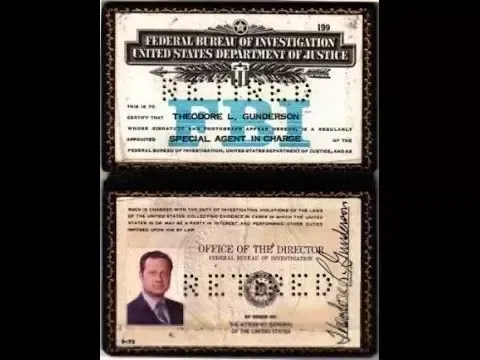Retirement FAQs

Below are answers to common retirement questions. Additionally, I highly endorse the Retirement Guide that is regularly published by Dan Jamison as it is the most informative document available regarding the FERS retirement system.
What Benefits Can I Expect To Receive When I Retire?
The Federal Employees Retirement System (FERS) replaced the Civil Service Retirement System (CSRS) in 1984 as our defined-benefit retirement system.
- CSRS provides 50% for the first 20 years of service and 2% for each year thereafter.
- FERS provides 34% for the first 20 years of service and 1% for each year thereafter.
The basic understanding was that CSRS annuitants would be ineligible for Social Security and FERS employees would be eligible for Social Security. The reality is that many CSRS employees eventually have enough non-federal employment to be eligible for Social Security (albeit potentially reduced for the Windfall Elimination Provision) and therefore most people consider the CSRS program to be called the Clearly Superior Retirement System. (I do!)
FERS is a three-tiered approach which relies upon:
1) A defined-benefit annuity,
2) Social Security benefits, and
3) Employee savings (through the Thrift Savings Plan (TSP))
to provide retirement benefits; frequently referred to as the “benefit pyramid.” Although CSRS allows non-matched TSP contributions, the CSRS defined-benefit annuity provided a very comfortable retirement without having to worry about Social Security or investing in the TSP and hoping that the market rewarded your investment decisions. The advent of FERS effectively transferred market risk from the government to the employee.
For example, a 30-year CSRS agent walked away with 70% of their High-3. A 30-year FERS agent walks away with 44% of their High-3, in addition to TSP matching and Social Security.
A law-enforcement/firefighter FERS retirement is comprised of four components:
1) FERS Basic Annuity based upon years of service and High-3 basic pay
2) Special Retirement Supplement (SRS) payable until age 62
3) Social Security (optionally payable at age 62)
4) TSP Funds
What Is The FERS Basic Annuity?
Under the FERS special provisions for law enforcement (since July 6, 2008), you will receive a 1.7% per-year service-credit benefit for the first 20 years of your service and 1% for each year of your service thereafter.
For example, if you worked 26 years under FERS as an agent, you would receive (20 x 1.7%) + (6 x 1%) = 40% of your High-3.
You will receive service credit for each year and each whole month of service from your combined work history, military-time purchase(s), civilian service credit purchase(s) and unused sick leave. Your High-3 includes Administratively Uncontrollable Overtime (AUO) and Law Enforcement Availability Pay (LEAP) [up to the 25% level] and “locality-based comparability payments” (i.e. locality pay). Locality pay certainly makes your High-3 “higher,” but it has no direct effect on your retirement annuity amount. It’s not like your retirement annuity will be higher just because you retired from Houston or San Francisco. Of course, if you were in one of these high-locality areas for three years, the benefit of the locality pay is already built into your High-3 salary.
All High-3 calculations exclude foreign-post and non-foreign-post differentials, night differential, holiday pay, scheduled overtime, bonus pay, all “allowances” such as the “Danger Pay Allowance” paid pursuant to 5 USC 5928; and just about everything else. The High-3 is a weighted-average calculation. If you were at your highest salary for only one month when you retired, that only counts for 1/36th of the High-3. I can’t stress this enough. The High-3 does not have to be the last 36 months of service. It is a period of 36 consecutive months of service where your pay was the highest. Your High-3 is computed on the pay that you received where a FERS retirement deduction was taken.
Can I Purchase Military Service Credit?
Military Service Deposits: Former honorable military time is creditable under FERS, but a deposit must be made to your agency to “buy” those years of service into FERS. This time counts at the 1% per-year-of service rate. Buying back military-service time into FERS can be a complex task and should be done with the assistance of a human-resources specialist at your agency.
There are two components to this deposit: 1) A fee based upon the percentage of the total military base pay and, 2) An interest charge if the service deposit is made after the three-year grace period.
The cost of buying back the service is a set percentage (usually 3%) multiplied by your base pay earned from your military service. The applicable interest rates vary from year to year and interest charges continue to accrue until the payment is made. For example, if you earned $100,000 in pay from military service, the approximate fee is $3,000 plus the compounded applicable annual interest charge for the years elapsed since the service was completed. If the service-credit deposit is made within two years and 364 days of beginning employment under FERS, there is no interest charge. After retirement, you cannot buy this service credit into FERS – it is forever lost. Bottom line: Do it as soon as possible – it is a great return on a small investment if you have military time. If you buy your military time back and end up separating before you retire, at age 62 (or at your MRA if you had 20 LEO years at separation), when your FERS annuity becomes payable to you, that military time will still be paid to you in your deferred annuity.
What Is The FERS Special Retirement Supplement (SRS)?
The Special Retirement Supplement (SRS) is unique to FERS. It is a payment from OPM in addition to the FERS basic-annuity payment. It is intended as a substitute for the Social Security portion of your complete FERS benefit package, from the date of retirement until the annuitant reaches age 62; the age when the annuitant becomes eligible to apply for Social Security. The SRS stops at age 62 even if the annuitant elects to delay the receipt of Social Security benefits until a later age. The SRS benefit is paid by OPM and receiving this benefit has absolutely no effect on your future Social Security benefit payments. Receiving this benefit is not an election – if the annuitant is eligible to receive it, it will be paid to him/her by OPM. This benefit is combined with the basic FERS annuity payment and deposited into your bank account as a single monthly-benefit payment.
When Am I Eligible to Retire?
Special Provisions employees are eligible to retire at:
1) Any age with 25 years of service in a special-provisions position,
2) At age 50 with 20 years of service in a special-provisions position,
3) And must retire at the end of the month in which they turn 57, unless an extension is granted, or upon accepting a non-special-provisions-covered position.
Keep in mind – I’m talking about “agent time” above. 5 years in a non-agent position and 15 years as an agent is not going to get you retired at age 50. If you retire before age 50, with 25 years or more, things are no different than if you left at age 50. Your annuity starts right away, you get COLAs right away and you can tap into the TSP using the life-expectancy option. There are no drawbacks to retiring before age 50 in regard to any FERS benefit that would not be payable until you were age 50. There are considerable consequences to TSP access if you retire before age 50 under the newly passed H.R. 2146.
Do I Receive Any Credit For My Unused Sick Leave And How Is My Service Credit Calculated?
Since January 1, 2014, FERS annuitants receive a 100% service credit for their unused sick leave. There are 2,087 hours in OPM’s work year. That means if you retire with 2,087 hours of unused sick leave, you will receive an additional year of service credit.
For example, if your High-3 was $120,000 and you worked 30 years under FERS, your FERS basic annuity will be (20 years x 1.7% per year) + (10 years x 1% per year) = 44%) x $120,000 = $52,800.
Tacking on an additional year of service from the sick leave credit would add $1,200 annually to the calculation. You must retire on an immediate annuity (one payable within 30 days of your last day at work) for unused sick leave to be counted for retirement credit. All unused sick leave accumulates at the 1% per-year rate, not 1.7%. Approximately 5.8 hours of unused sick leave equates into one day of calendar-service credit, because service credit is calculated using calendar days, not work days. For example, if you have 174 hours of unused sick leave at retirement; that equates to one additional month of service. When performing this calculation, all months have 30 days for OPM’s purposes.
How Can I Cash Out The Most Unused Annual Leave When I Retire?
At the end of the leave year, most federal employees are allowed to carry over 240 hours of annual leave from one leave year into the next (Overseas assignments and SES members have higher limits, as do some agencies). At the 8-hours-per-pay-period accrual rate, a senior employee earns 208 hours of annual leave per year. If you play it right, you could add the 208 earned hours (theoretical maximum, but less in practice due to end-of-year timing, so plan on 200) onto the 240 hours you carried over from the previous year, giving you a potential leave balance of 440 hours by the end of the leave year. As long as you retire before the end of the leave year (dates vary each year), you will be paid for all 440 hours - that's more than 11 weeks' pay - not a bad way to start retirement. If you retire at year-end, and there is a pay adjustment in January, your annual leave will be paid out at the higher-adjusted rate as OPM rules require annual leave to be paid out at the rate you would have received on those hours had you stayed in service and taken the leave, including the possible January pay adjustment. Social Security and Medicare taxes are withheld from your annual leave payout. The unused annual leave hours are paid out at the rate you would have earned if you’d taken them, so AUO/LEAP and locality adjustments are included. Most pay systems also withhold taxes at the same rate as an award, approximately 25%. No TSP contribution can be made from your annual leave payout.









